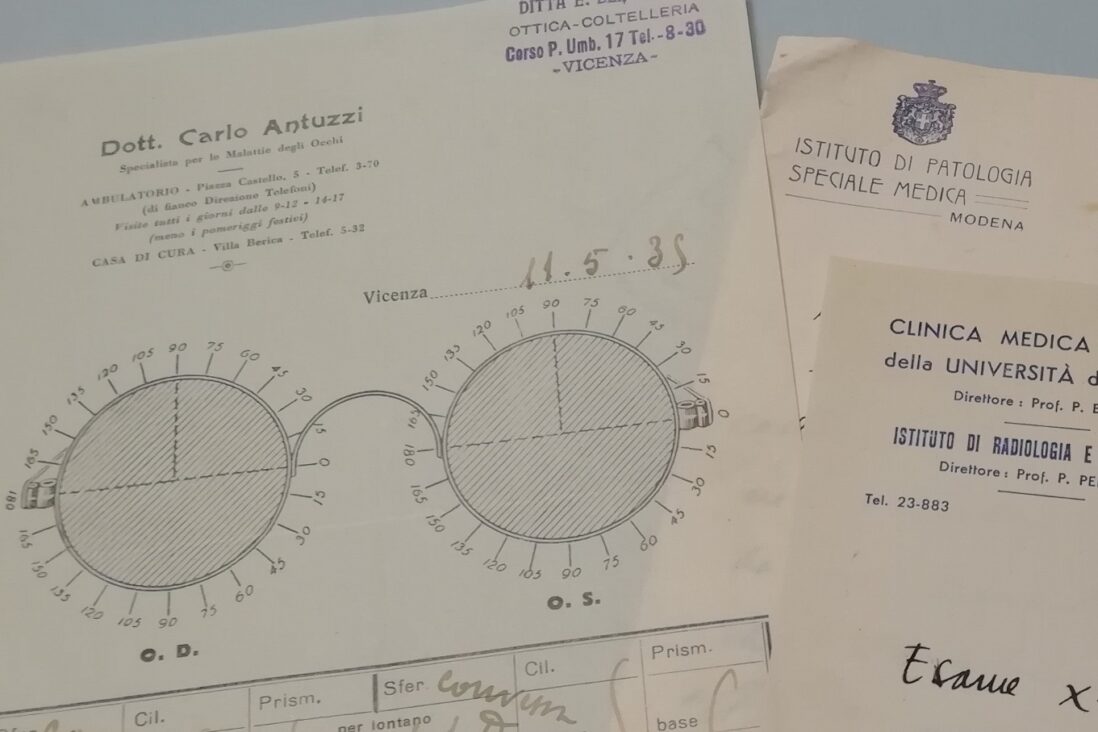Doctors, surgeries and clinics in the archive papers

Although some Jesuits were doctors and many brothers were nurses, today we are not dealing with them but with lay doctors.
In the papers in our archive, in fact, one can find the names of many doctors and references to their surgeries, since the process of producing documents for novices also involved some specific medical records.
For those entering the novitiate, it was indeed necessary to produce various documents proving the sacraments received, hence the certificate of Baptism and Confirmation, and for the 19th century also the parish priest’s attestation of the candidate’s morals, but also the state of health.
At least until the 19th century, not everyone could join the Company, especially in the presence of chronic disabling diseases or impairments that could strongly condition religious life and the apostolate. A blindness that occurred during the first years of study could be one of the reasons to ask for resignation, not being able to read and study, at a time when there was a lack of supporting technologies or alternative methods.
The medical certificate did not simply provide a generic ‘healthy and robust constitution’, like those required today for sporting activities.
However, access to the novitiate was not guaranteed exclusively to those in perfect health, but it was necessary for the Company to be aware of any previous or chronic problems, also to better guide the choices for future destinations and apostolates.
A poor health could agree less with the missions but more with a house of spiritual exercises, or with duties related to the porter’s lodge, the library, the bursar’s office.
Many doctors specified that their patients did not use alcohol or smoke.
The medical certificate, especially from the end of the 19th century onwards, is written on headed paper and in addition to the practitioner’s name often shows his specialisation, the address of the surgery or private practice.
In the photo accompanying the column, we find an ophthalmologist’s card for Brother Emilio Pizzinini, who after two years of novitiate needed glasses. As we also saw in the in-depth article a few months ago, young Jesuits after their first years of study often experience eye fatigue, often due to the little light available before the spread of electric light.
Many files also contain the certificate of smallpox vaccination, compulsory for boarding school pupils, for example, and here too the name of the professional who inoculated the vaccine.
In the home diaries and correspondence there are also numerous references to Jesuit hospitalisations, when the brother’s care at home was no longer sufficient, the famous Roman clinic ‘Quisisana’ is mentioned by Fr. Fr Lorenzo Rocci in his personal diary, as is the Umberto I in Rome but also the Pammatone hospital in Genoa.
Today, the medical certificate is no longer required, replaced by the psychological report required for each candidate.
In many archival series, therefore, we find documents produced by doctors, hospitals and clinics that could help all researchers and scholars of the history of medicine and those struggling with the biography of some luminary who also signed these certificates for Jesuit novices.
Maria Macchi











